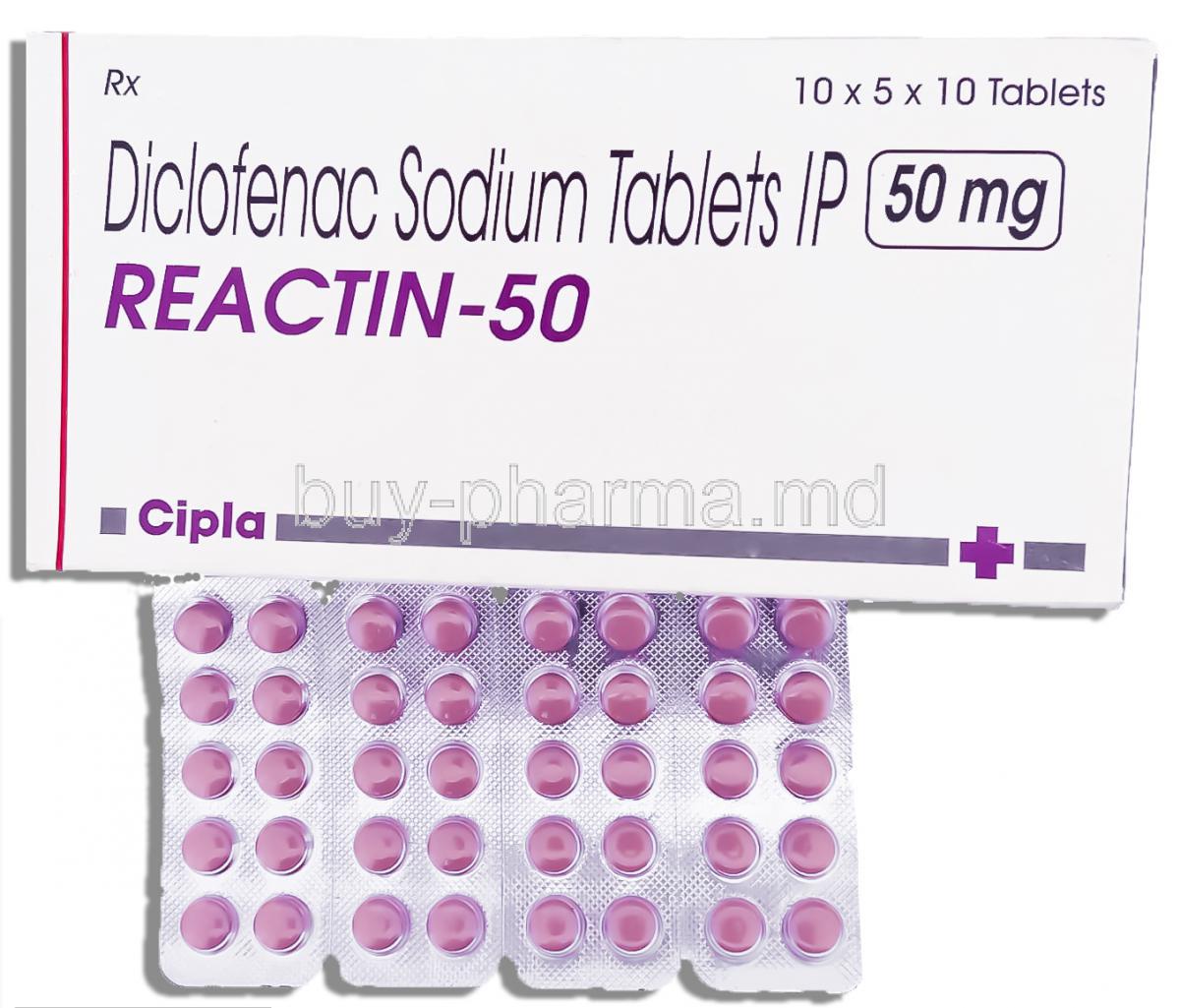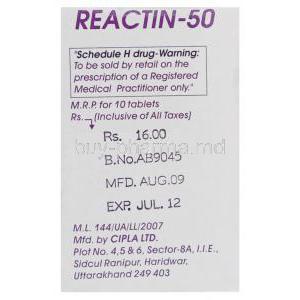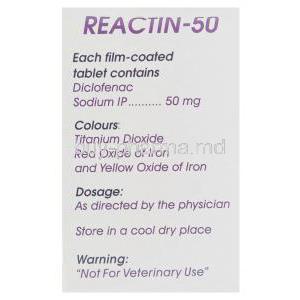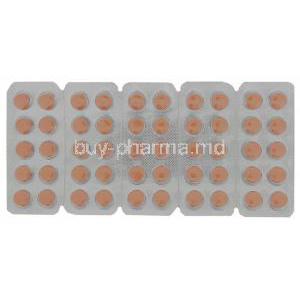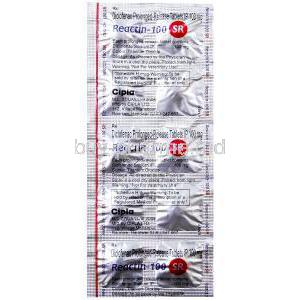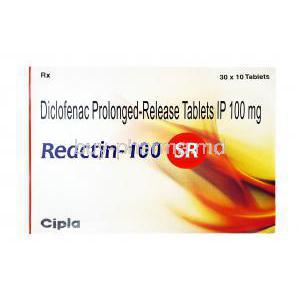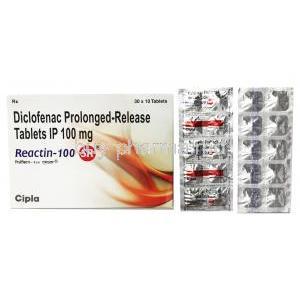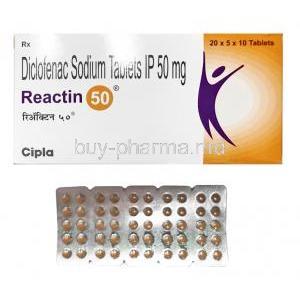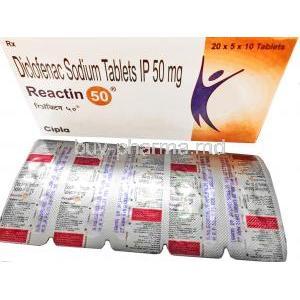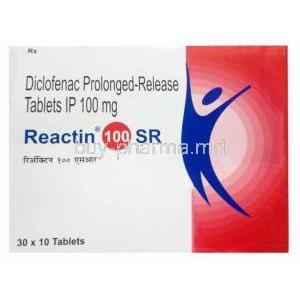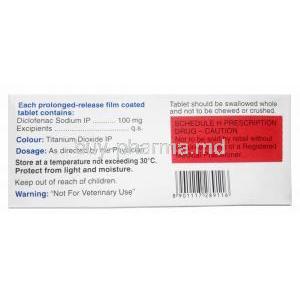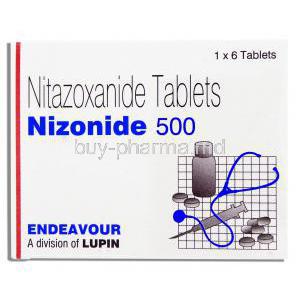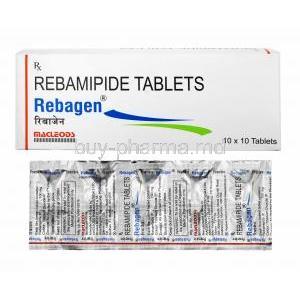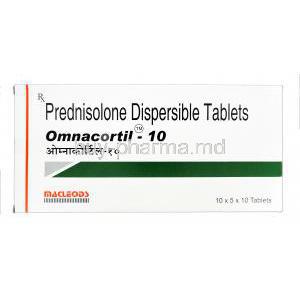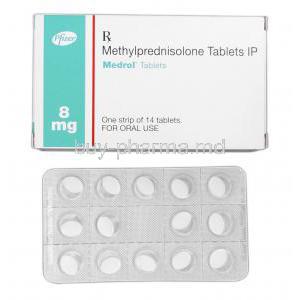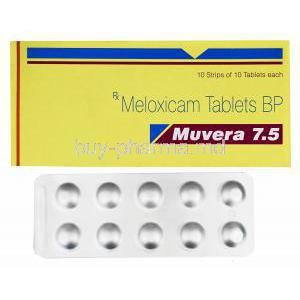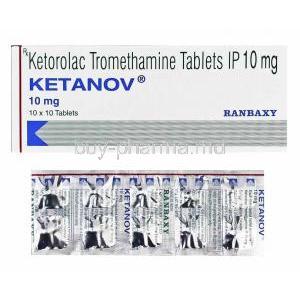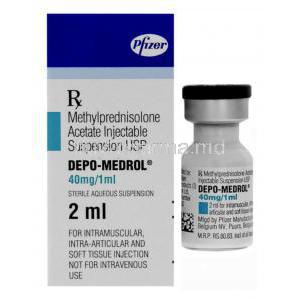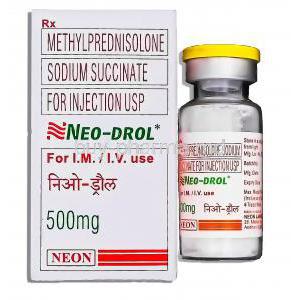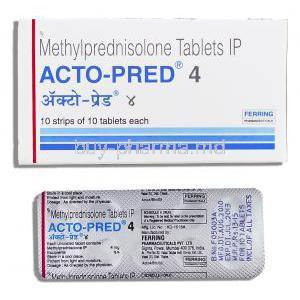Introduction
Overview of Reactin and Diclofenac Sodium
Reactin, containing diclofenac sodium as its primary active ingredient, is a widely recognized medication used to alleviate pain and reduce inflammation. As a member of the nonsteroidal anti-inflammatory drug (NSAID) class, it plays a critical role in the management of both acute and chronic conditions. Its efficacy and versatility have made it a cornerstone therapy in numerous medical disciplines, from rheumatology to post-surgical recovery.
Classification: Nonsteroidal Anti-Inflammatory Drug (NSAID)
Diclofenac sodium belongs to the NSAID category, a pharmacological group that exerts its effects through modulation of inflammatory pathways. Unlike opioids, it does not affect pain perception directly in the central nervous system but instead mitigates the biochemical triggers that provoke pain, swelling, and fever.
Therapeutic Importance in Pain and Inflammation Management
The therapeutic significance of diclofenac sodium lies in its ability to address a broad spectrum of painful conditions:
- Chronic joint diseases such as arthritis
- Acute musculoskeletal injuries
- Gynecological pain including menstrual cramps
- Headaches and specific forms of migraine
This versatility underpins its frequent use in both outpatient and hospital settings.
Availability in Various Formulations
Reactin is manufactured in diverse pharmaceutical forms to accommodate different patient needs:
- Oral tablets and capsules for systemic treatment
- Topical gels, ointments, and patches for localized relief
- Injectable solutions for rapid systemic action
- Rectal suppositories for patients unable to take oral medications
Composition and Formulations
Active Ingredient: Diclofenac Sodium
The therapeutic efficacy of Reactin is derived from diclofenac sodium, a salt form that enhances solubility and absorption.
Available Strengths and Dosage Forms
Reactin is available in a range of strengths, commonly including 25 mg, 50 mg, and 100 mg oral preparations. Extended-release tablets are also provided for prolonged pain management, while topical formulations typically contain 1–2% diclofenac sodium.
Inactive Ingredients and Excipients Overview
Formulations may include excipients such as cellulose derivatives, starch, lactose, and magnesium stearate. These compounds improve stability, absorption, and patient compliance but do not contribute to therapeutic effects.
Branded vs. Generic Variations
Generic equivalents of diclofenac sodium are widely available and contain the same active substance. Branded versions like Reactin may differ in excipients, release mechanisms, or formulation quality, but clinical efficacy remains comparable when manufactured to regulatory standards.
Mechanism of Action – How Reactin Works
Inhibition of Cyclooxygenase (COX-1 and COX-2) Enzymes
Diclofenac sodium works by inhibiting the cyclooxygenase enzymes (COX-1 and COX-2). These enzymes catalyze the production of prostaglandins, the chemical mediators responsible for pain, swelling, and fever.
Reduction of Prostaglandin Synthesis
By curtailing prostaglandin synthesis, diclofenac diminishes the body’s inflammatory response. This reduction alleviates redness, heat, and swelling in affected tissues.
Anti-inflammatory, Analgesic, and Antipyretic Properties
The clinical benefits of diclofenac sodium include:
- Anti-inflammatory action: Decreases tissue inflammation
- Analgesic effect: Relieves mild to moderate pain
- Antipyretic function: Lowers elevated body temperature
Pharmacokinetics: Absorption, Metabolism, and Elimination
Diclofenac sodium is rapidly absorbed following oral administration, with peak plasma concentrations typically observed within 1–2 hours. It undergoes extensive hepatic metabolism via cytochrome P450 enzymes, and its metabolites are excreted primarily through urine and bile.
Approved Medical Uses
Management of Osteoarthritis and Rheumatoid Arthritis
Reactin is frequently prescribed to reduce joint pain, stiffness, and swelling associated with osteoarthritis and rheumatoid arthritis, thereby enhancing mobility and quality of life.
Treatment of Ankylosing Spondylitis
In patients with ankylosing spondylitis, diclofenac alleviates spinal inflammation and improves posture-related discomfort.
Relief of Acute Musculoskeletal Pain
Diclofenac sodium is effective in treating acute back pain, sprains, strains, and sports-related injuries.
Post-Operative and Post-Traumatic Inflammation and Swelling
It is used as an adjunct therapy to minimize swelling and pain following surgical procedures or traumatic injuries.
Treatment of Primary Dysmenorrhea
For women experiencing menstrual cramps, Reactin reduces uterine contractions and prostaglandin levels, offering significant relief.
Migraine Management
Specific formulations of diclofenac sodium, such as rapid-dissolving tablets, are approved for the acute treatment of migraines.
Off-Label Uses
Use in Gout Attacks
Though not formally approved, diclofenac is often used to mitigate inflammation and pain associated with acute gouty arthritis.
Adjunct Therapy for Renal Colic Pain
It can be employed alongside other medications to ease the severe pain caused by kidney stones.
Management of Acute Migraine Variants
Some clinicians prescribe diclofenac for migraine variants beyond those officially indicated, including cluster-type headaches.
Experimental Uses in Cancer-Related Pain Syndromes
Ongoing research explores the potential of diclofenac in managing pain syndromes associated with malignancies and cancer therapies.
Dosage and Administration
Standard Adult Dosing for Common Conditions
Typical oral doses range between 75 mg to 150 mg daily, divided into two or three administrations, depending on severity and condition.
Pediatric Dosing Guidelines
Diclofenac use in children is generally restricted and carefully tailored based on body weight and clinical necessity, usually under specialist supervision.
Topical Application Instructions
When used as a gel, a thin layer should be applied to the affected area 3–4 times daily, with gentle massaging to facilitate absorption.
Injectable and Suppository Administration Details
Injectable forms are typically reserved for acute, severe pain and administered under medical supervision. Suppositories offer an alternative route when oral administration is unsuitable.
Duration of Therapy Recommendations
Treatment should employ the lowest effective dose for the shortest possible duration to reduce the risk of adverse effects. Chronic use necessitates regular medical evaluation.
Missed Dose and Overdose Management Advice
If a dose is missed, it should be taken as soon as remembered unless it is close to the next scheduled dose. Overdose may result in severe gastrointestinal, hepatic, or renal complications. Immediate medical attention is required, with management focused on supportive measures and monitoring for toxicity.
Side Effects
Common Side Effects
Like many nonsteroidal anti-inflammatory drugs, diclofenac sodium may elicit a range of common, generally mild adverse effects. These tend to resolve with dose adjustment or discontinuation.
- Gastrointestinal disturbances: Nausea, indigestion, abdominal pain, and bloating are frequently reported, particularly at higher doses.
- Headache and dizziness: These neurological symptoms are relatively common but usually transient.
- Rash or mild skin irritation: Topical preparations may cause localized redness, itching, or mild burning sensations.
- Elevated liver enzymes: Routine laboratory tests may show mild increases in liver function markers, usually reversible upon discontinuation.
Serious Side Effects
Although less common, serious adverse reactions can occur and warrant immediate medical intervention.
- Gastrointestinal ulceration and bleeding: Long-term use increases the risk of peptic ulcers, hemorrhage, and perforation.
- Cardiovascular risks: Diclofenac has been associated with an increased incidence of heart attack, stroke, and elevated blood pressure.
- Hepatotoxicity and liver failure: In rare cases, severe liver damage may occur, sometimes resulting in fatal outcomes.
- Kidney impairment and fluid retention: Prolonged use may compromise renal function and lead to edema or electrolyte disturbances.
- Hypersensitivity reactions: Severe allergic responses such as anaphylaxis or angioedema may develop unpredictably.
Drug Interactions
Interaction with Anticoagulants and Antiplatelet Agents
Concurrent use with warfarin, heparin, or aspirin can significantly increase the risk of bleeding complications. Monitoring of coagulation parameters is crucial.
Risks with Other NSAIDs and Corticosteroids
Combining diclofenac with other NSAIDs or corticosteroids heightens the likelihood of gastrointestinal ulcers and hemorrhage.
Potential Interactions with Antihypertensives and Diuretics
Diclofenac may diminish the efficacy of antihypertensive agents and diuretics, contributing to fluid retention and elevated blood pressure.
Impact on Lithium and Methotrexate Levels
It can elevate plasma concentrations of lithium and methotrexate, leading to toxicity if not carefully monitored.
Alcohol and Gastrointestinal Risk Amplification
Alcohol consumption while using diclofenac intensifies the risk of gastric irritation, bleeding, and ulcer formation.
Warnings and Precautions
Black Box Warnings for Cardiovascular and Gastrointestinal Risks
Diclofenac sodium carries official boxed warnings emphasizing the elevated risk of cardiovascular thrombotic events and serious gastrointestinal complications.
Avoidance in Patients with Active Peptic Ulcer Disease
Patients with a history of gastric or duodenal ulcers should avoid diclofenac unless strictly necessary and closely supervised.
Monitoring of Renal and Hepatic Function
Regular monitoring of kidney and liver function tests is advisable, especially during prolonged treatment.
Risks of Long-Term or High-Dose Use
Prolonged exposure or excessive dosing increases the probability of cumulative organ toxicity, necessitating vigilant follow-up.
Contraindications
- Known hypersensitivity to diclofenac or other NSAIDs
- History of asthma, urticaria, or allergic reactions following NSAID use
- Active gastrointestinal bleeding, ulceration, or perforation
- Severe cardiac, renal, or hepatic insufficiency
- Use during the third trimester of pregnancy
Careful Administration and Special Considerations
Administration to Elderly Patients
Elderly individuals are particularly susceptible to gastrointestinal bleeding and renal impairment. Lower doses and careful monitoring are recommended.
Administration to Pregnant Women and Nursing Mothers
During pregnancy, especially in the later stages, diclofenac may pose risks such as premature closure of the ductus arteriosus. Trace amounts may pass into breast milk, potentially affecting infants. Safer alternatives are usually preferred.
Administration to Children
While certain formulations are approved for pediatric use, dosing must be meticulously weight-adjusted. Long-term use in children should be approached with caution due to limited safety data.
Overdose and Emergency Management
Symptoms of Overdose
Signs may include severe abdominal pain, gastrointestinal bleeding, hypotension, renal impairment, drowsiness, or even coma in extreme cases.
Emergency Treatment Protocols
Supportive care is the primary approach. Activated charcoal may be administered if ingestion is recent. Gastric lavage is rarely required but considered in life-threatening scenarios.
Monitoring for Complications
Continuous observation of renal, hepatic, and cardiovascular status is essential following overdose, with interventions provided as complications arise.
Storage and Handling Precautions
Recommended Storage Conditions
Tablets, gels, and injectables should be stored below 25°C, away from excessive heat and humidity.
Protection from Heat, Moisture, and Direct Sunlight
Exposure to these factors may degrade potency and compromise stability, particularly for topical gels.
Shelf Life and Expiration Guidance
Products must be used before their expiration date to ensure therapeutic efficacy and safety.
Safe Handling to Avoid Accidental Exposure
Topical preparations should be applied with clean hands and kept away from mucous membranes and eyes.
Proper Disposal of Unused or Expired Medication
Unused tablets or topical formulations should be disposed of responsibly. Flushing into water systems is discouraged; designated pharmaceutical disposal methods are preferable.

